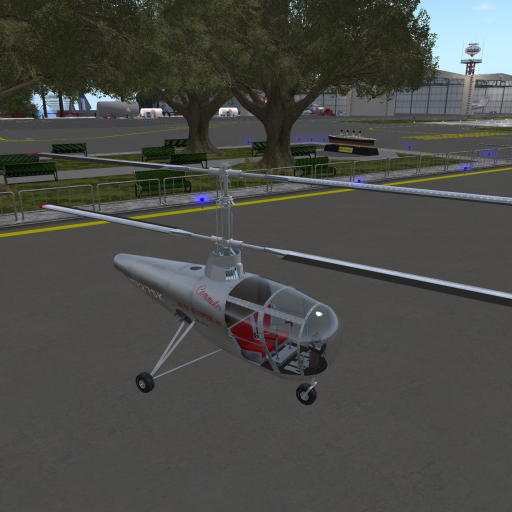UH-4 Commuter
|
UH-4 Commuter | ||||||||||||||
|
| ||||||||||||||
|
This model is a recreation of the UH-4 prototype, currently residing in the Hiller Aviation Museum at the San Carlos Airport in California. The UH-4 was Stanley Hiller's fourth helicopter design, following his successful XH-44,the first successful coaxial rotor design.
The UH-4 was designed in 1946, as a bid for the future when thousands of U.S. servicemen, trained to fly in the Second World War, might want to buy an inexpensive helicopter to fly to and from their jobs, or away from the city on weekends. It was small, and light and could be moved around easily. it had minimal instrumentation and a nearly "turn key" operation. at the time of it's design, Henry J. Kaiser was partnered with Hiller, forming a company named United Helicopters, and he backed the young Stanley Hiller's efforts at the time. Hiller demonstrated the helicopter at a shareholder's meeting held at the football field of Aragon High School, in San Mateo California, showing the effect of balanced controls and ease of use, by towing the hovering helicopter around the field by a rope, while the pilot sat with his arms crossed and his feet off the pedals, displaying the balanced controls that Stanley Hiller insisted on.
The design won the Grand Award at the 1947 World Inventors' Congress. However the future of cheap and plentiful air transportation was not to be, and further work on the UH-4 was halted. The Uh-4 was Hiller's final coaxial design, before inventing the "Rotormatic" control scheme with servo-paddles, for his follow on UH-5, which became the basis for the Hiller 360, The first Helicopter to cross the United States in 1948. this was further developed as the UH-12, which became the OH-23 for the U.S. Army in 1948.
The UH-4 is a two place, coaxial rotor design, powered by a 150 hp Lycoming O-290-0 carburetted engine. It has a rotor span of 33 feet (10.08m). It has a top speed of 100 mph, and a cruising speed of 75 mph, and a range of 200 miles.
The SAFE (Shergood Aviation Flight Engine) engine driving this virtual reproduction is the most advanced and realistic in SL., developed by an RL helicopter pilot The engine is purely physics based and features independent control of cyclic, collective and anti-torque pedals. Many real-world helicopter effects are also modeled as part of the engine including translational lift, translating tendency, ground effect, main rotor torque and vortext ring state.
Master Contents
- Sounds - whitewolf mumfuzz
- Mesh and Textures - Karl Reisman
- Flight Testing - Lanelle Saunders and Seb Serenity
Scripts - Kelly Shergood
